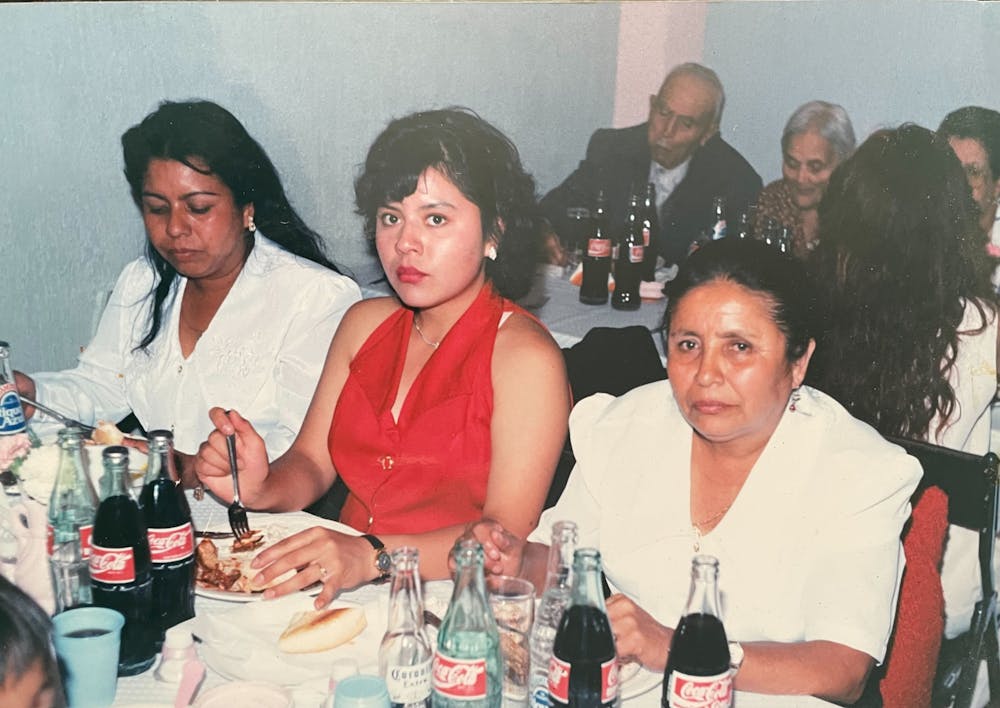How many calories does a serving have? This was the question that exhausted my brain while choosing my meals. Thoughts of the “freshman 15” plagued my mind, always looming over me as I looked at the daily menu or took my trips to Mack’s.
I was obsessed, maybe even addicted, to keeping track of every single thing I ate. Eating anything but salads filled me with so much guilt that I felt the need to punish myself by skipping a meal or two, sometimes even more. It was consuming me, completely swallowing me whole and leaving nothing but a shell of misery.
Moving off campus, I worried about my habit. I wondered if my obsession would follow me to my kitchen, maybe even worsening because I no longer had meal points to spend. I’ll admit, for a while, I did continue this restricting pattern. I would scour through the isles at the grocery store, examining the back label of every single product to find which one had the lowest amount of calories. My pantry was filled to the brim with all sorts of diet and low-calorie options.
It didn’t help that I had refused to learn how to cook during my teenage years. Young me felt like every attempt to get me into the kitchen was a misogynistic ploy to get me to conform to typical Mexican gender roles. Every warning from my mom or grandma would be met with a scoff, as if I felt like staying out of the kitchen made me a stronger or more resilient woman than they were.
Coincidentally, it was around this time that my Instagram and TikTok feeds began filling with videos of people sharing their traditional family recipes. Mexicans of my generation would cook their favorite foods and share them with the internet, seeming genuinely proud to do so. I began to think about what I was doing and I felt a sense of paralyzing fear creep up my spine. If I didn’t learn how to cook, my family recipes would be lost forever.
My kids and everyone that came after wouldn’t know how much albondigas hit the spot on those cold, dreary days. They wouldn’t know how rich and flavorful mole tasted, especially if it was brought from Mexico. They wouldn’t understand how heavenly my grandma’s fried quesadillas de chicharrón were, the queso Oaxaca giving a cheese pull that put any grilled cheese to shame. If I wanted to preserve this part of my heritage, I needed to step up and get over myself and my fear of food.
As I followed the recipes my mom would send me, trying over and over to get them right, I started to feel differently about food. I no longer resented it or saw it as my enemy. I began to see cooking as an expression of love. Every step of the cooking process was crucial to making a dish taste good; one misstep and it was completely ruined.
I thought about how much attention to detail my mom and grandma put into their cooking when they would make meals for the whole family. All their dishes tasted perfect, because it was their way of saying, “I love you.” Every single bite was a warm hug or a kiss on the cheek, their way of embracing us and showing how much we meant to them. That’s when I understood how much I really took my family and my traditions for granted.
Now, every time I whip out the maseca and my tortilla press, or the molcajete to make salsa, I feel connected to my loved ones, even the ones that are no longer with me. Sometimes I catch a glimpse of my reflection on the microwave as I use the stove and I see every woman in my family that came before me. As I type this, I can’t help but think that maybe those videos on my feed weren’t a coincidence. Maybe they, mis ángeles de guardia, sent me a sign when they saw I needed it the most.
Tiffany Marquez Escobar is a reporter at The Beacon. She can be reached at marqueze25@up.edu.
Have something to say about this? We’re dedicated to publishing a wide variety of viewpoints, and we’d like to hear from you. Voice your opinion in The Beacon.









